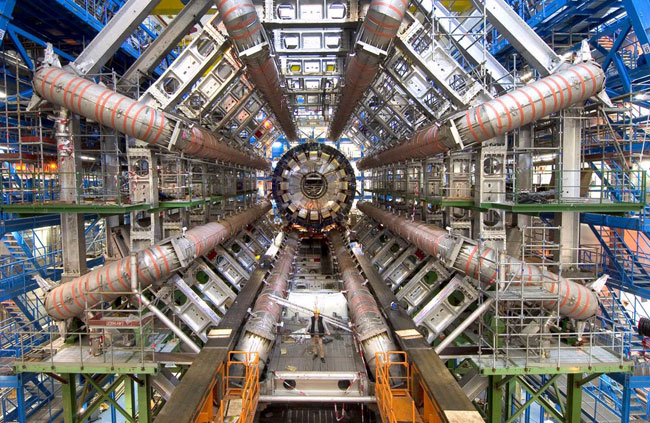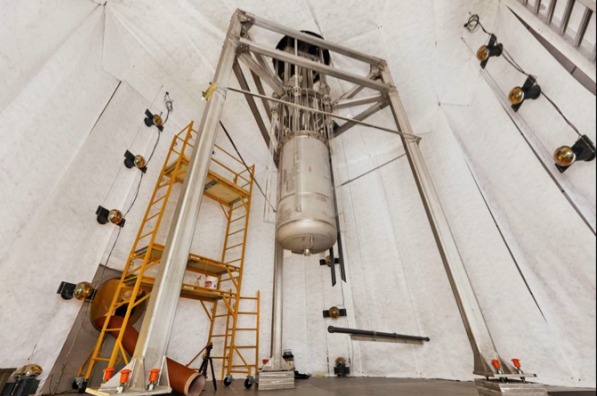6 Cool Underground Science Labs
The underground labs

Studies of the universe and its makeup generally conjure images of astronomers at telescopes, peering up at the galaxies, nebulas and stars scattered across the night sky. But to understand the decidedly less visible, but very important, parts of the universe, such as neutrinos and dark matter, scientists have to take a different approach — namely, by going underground.
Being underground givesscientists protection from most of the "noise" created by other kinds of particles entering the Earth, such as cosmic rays and other background radiation from the universe.
Of course, it is somewhat complicated to get underground, so scientists how have to get creative. Sometimes researchers work in repurposed mines. Others are required to drill big tunnels themselves to run particle accelerators or study nuclear fuel disposal.
The underground labs here are sprinkled across two continents and are seeking answers to questions such as how the universe formed, how particles can transform into other ones, and the true nature of dark matter.
SNOLAB

Sharing space with miners, SNOLAB (an expansion of the Sudbury Neutrino Observatory) lies 1.2 miles (2 kilometers) below the ground in the Vale Creighton Mine in Sudbury, Canada. While the miners are working on producing nickel, the researchers at SNOLAB are focused on astroparticle physics.
Among its many projects are several devoted to dark matter, which is a mysterious substance believed to make up most of the matter in the universe (unlike the matter that makes up Earth, humans and everything else visible in the universe). SNOLAB's PICASSO experiment, for example, is searching for a theorized particle of dark matter (called a WIMP, for weakly interacting mass particle) using freon droplets in a gel. The forthcoming Cryogenic Dark Matter Experiment plans to hunt for WIMPS in solid-state detectors constructed from germanium, which is a sort of carbon metal.
Large Hadron Collider

Billed as the world's "largest and most powerful particle accelerator" by its parent organization the European Organization for Nuclear Research (CERN), the Large Hadron Collider is the most visible of a series of colliders located as deep as 570 feet (175 metres) in an area near Geneva, Switzerland. LHC has a 16.7-mile (27-kilometer) magnetized ring where two beams of particles can smash into each other at speeds close to the speed of light. The collisions take place close to four particle detectors around the ring. Through examining the collisions, scientists hope to learn more about how the universe was formed, and if there are unseen dimensions to space.
Get the world’s most fascinating discoveries delivered straight to your inbox.
The particle accelerator lies in a tunnel that was originally carved out for another collider, called the Large Electron Positron collider. "The rock surrounding the LHC is a natural shield that reduces the amount of natural radiation that reaches the LHC and this reduces interference with the detectors," according to the United Kingdom's Science and Technology Facilities Council. "Vice versa, radiation produced when the LHC is running is safely shielded by 50 to 100 meters [160 to 330 feet] of rock."
Soudan Underground Laboratory

An old iron mine in Minnesota hosts several detectors to learn more about fundamental particles that make up our universe. The experiments are almost half a mile (0.8 kilometers) underground and search for the nature of dark matter and interactions between neutrinos (neutral subatomic particles), among other things.
In 2011, the MINOS neutrino experiment in the lab found evidence of one kind of rare particle — a neutrino — changing into a different kind. Neutrinos are chargeless and almost massless particles that have three types: electron, muon and tau. The lab was one of two that recorded muon neutrinos changing into electron neutrinos, a world first.
Gran Sasso National Laboratory

Covered by 4,600 feet (1,400 meters) of rock on average, the Gran Sasso National Laboratory is an underground lab devoted to searching for neutrinos, cosmic rays and other types of particles emanating from space. It's located beside a freeway tunnel between L'Aquila and Teramo, Italy, about 75 miles (120 km) from Rome.
Gran Sasso is perhaps best remembered as the spot where a faulty experiment made particles appear to be travelling faster than light. In 2011, an experiment measured neutrinos going between two labs 454 miles (730 kilometers) apart and found they arrived 60 nanoseconds sooner than a light beam. Further examination revealed a problem with the timer in the fiber optic system.
Large Underground Xenon Detector

Buried a mile beneath the Black Hills of South Dakota, the Large Underground Xenon Detector dark matter experiment is on a hunt for particles that could explain the expansion of the universe. The heart of the experiment is a 815-pound (370 kilograms) liquid xenon detector primed for particle detection.
The first results from three months of detector work — released in October 2013 — revealed no evidence of dark matter, researchers said at the time, but added that the experiment is scheduled to run for a couple more years. They were hoping to see a flash of light and electrons when a WIMP touched a xenon atom, which would then produce photons for the detectors to see.
Underground Research Laboratory

Nuclear fuel is notoriously dangerous, requiring a safe way to dispose of it once it is no longer required for applications such as medical technologies. As such, Atomic Energy of Canada Ltd. has an Underground Research Laboratory in Manitoba to test ways to store the fuel "in a low permeability rock mass," according to the University of Toronto.
The facility reaches depths of 1,440 feet (440 meters) underground, and AECL is interested in tracking how rocks can change shape after excavation and how nuclear products are transported in groundwater. One experiment drilled a tunnel of about 151 feet (46 meters) long and 12 feet (3.5 m) in diameter to see how rock deforms around it. Another experiment is looking at how well tunnel seals perform.

Elizabeth Howell was staff reporter at Space.com between 2022 and 2024 and a regular contributor to Live Science and Space.com between 2012 and 2022. Elizabeth's reporting includes multiple exclusives with the White House, speaking several times with the International Space Station, witnessing five human spaceflight launches on two continents, flying parabolic, working inside a spacesuit, and participating in a simulated Mars mission. Her latest book, "Why Am I Taller?" (ECW Press, 2022) is co-written with astronaut Dave Williams.


